|
|
 |
 |

Amityville colorized photo postcard c. 1905
 |
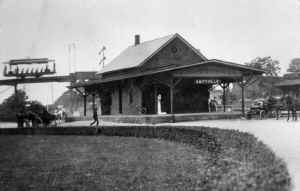
Amityville Station - Huntington RR
Trolley on Trestle
view NW c.1910
Archive: Dave Keller |
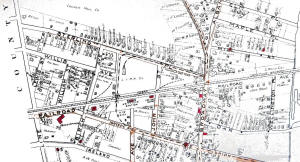
Amityville Hyde map c.1900 |
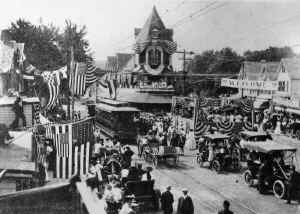
Amityville - Cross-Island Trolley Opening Day
8/25/1909
The building is known as the "Triangle Building" - located at
Broadway and Park Avenue
looking south. Collection: Robert Emery, SUNY Stony Brook
August 25, 1909, was celebrated in downtown
Amityville as opening day for the Huntington-Amityville trolley.
"Welcome to our city," the sign says. Amityville Historical
Society
The Huntington trolley used this station as a stop from 1909 to 1919. |
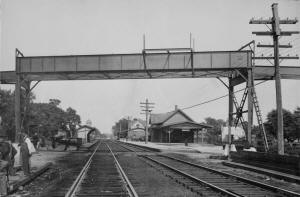
Amityville Station trestle view E c.1900 for the Cross-Island Trolley line
ran 18.5 miles from the Halesite, south, to the Amityville docks on the
Great South Bay from 1909-1919.
Photo: William J. Rugen Archive: Queens Public Library
Huntington Railroad (Cross-Island
Trolley) extended service to Farmingdale and on to Amityville began
8/25/1909. That year the power plant was added to the west side of
the Farmingdale station building. Research: Dave Keller |

Amityville 1889 Station interior 8/1960
Photo/Archive: Brad Phillips: Brad Phillips |
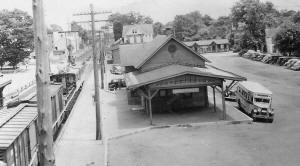
Amityville Station - View E c.1938
Photo: Harold Gardner -
Archive: Brad Phillips |

Amityville colorized photo postcard view
W 1910 Huntington
RR Trolley on Trestle |
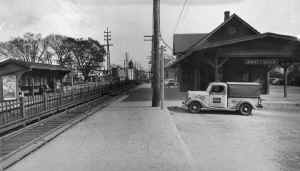
Amityville Station View E - 1937
Photo: Ron Ziel Collection Emery SUNY Stony Brook |

Amityville station view SW
1953
|
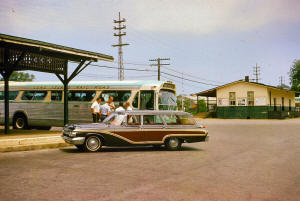
Amityville Freight Station first Road n' Rail Bus - View NE 6/08/1963
Photo/Archive: Brad Phillips |
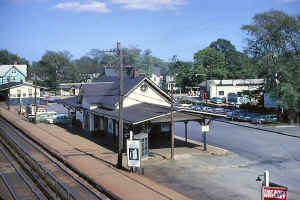
Amityville station View SE 1963
Photo/Archive: Brad Phillips |

Amityville Emery map - MP30-31
08/19/1958 
Amityville Emery 1958 backdated c.1930's
Diagram: Steven Lynch
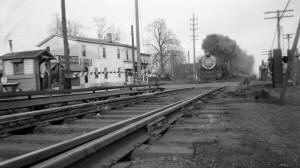
PRR K4s #5362 westbound at Broadway, Amityville crossing
c.1935 - Archive: Dave Keller |
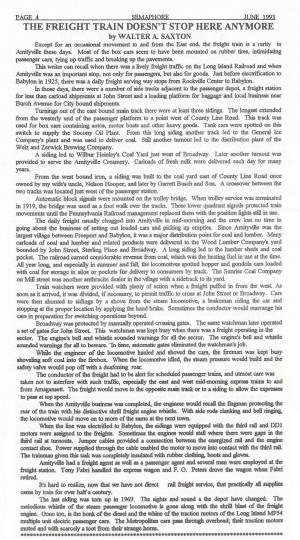
"The Freight Train Doesn't Stop Here Anymore"
by Walter A. Saxton - LIST NRHS Semaphore June 1993 |
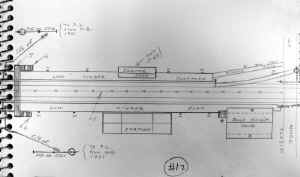
Amityville - Emery ledger map 1958
Emery's finished product maps in his collection sold to SUNY Stony Brook.
All drawn in ledger-sized spiral notebooks and illustrated with actual
photos.
Info: Dave Keller 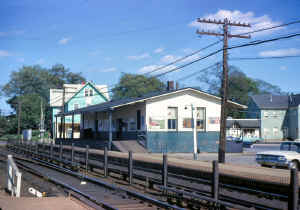
Amityville freight station 5/1964 View E
Photo/Archive: Brad Phillips |

County Line Rd., Amityville - View S - 1931
Standard Oil Co. |

County Line Rd., Amityville - View E - 1931
Zavet Coal & Lumber Co. - Knickerbocker Ice Plant (right) |
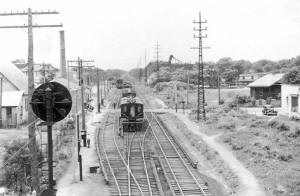
DD1s working the far left team track - View W
c.1938 - Photo: Harold Gardner -
Archive: Brad Phillips |

Amityville Broadway widening - View S 4/1960
Photo/Archive: Brad Phillips |
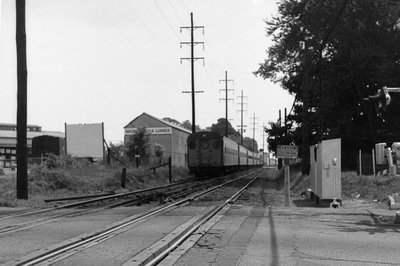
Amityville - John Street View W
1965
Archive: George Forero |
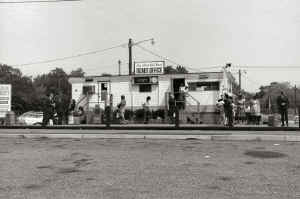
Amityville - Temporary ticket office 1965
Archive: George Forero
|
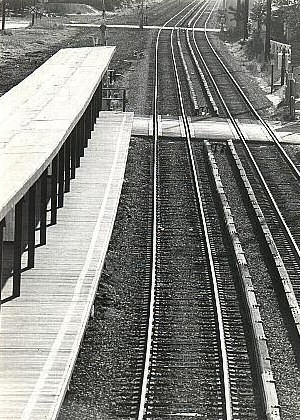
Amityville temporary platforms, old tracks have been
torn out.
View W 1969 Archive: William Gilligan |
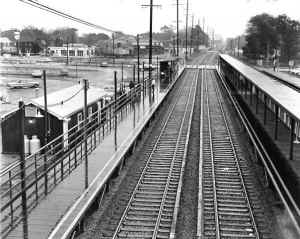
Amityville temporary station facilities and
tracks view E from crossover bridge late 1968
Archive: Dave Keller
|
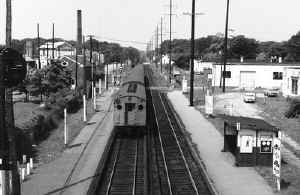
Amityville View E 1965
Archive: George Forero
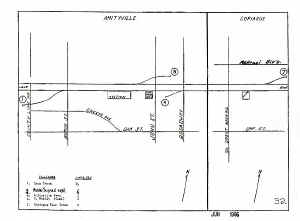
LIRR maps Amityville-Copiague 6/1966
Archive: Dave Keller
|
|
AMITYVILLE Station History:
S. S. R. R. (South Side R.R.) SVC. BEGAN:10/28/1867. DEPOT BUILT: NOV-DEC/1868. MOVED TO PRIVATE PROPERTY
(29 RAILROAD AVE.): 1889. STILL STANDING:
1/2020.
2ND DEPOT OPENED: 7/25/1889, RAZED: 5/29/64. REPLACED WITH TEMPORARY
STATION BUILDING. IN SVC: 5/29/64. OUT OF SVC: 10/25/68 DUE TO RELOCATION OF TRACKS AND FACILITIES FOR GRADE CROSSING ELIMINATION.
BLDG. RAZED.
2ND TEMPORARY STA. BUILDING ACCOUNT OF GRADE CROSSING ELIMINATION IN SVC: 10/25/68.OUT OF SVC: 8/7/73 AND
RAZED.
ELEVATED STRUCTURE IN SVC: 8/7/73 Research: Dave Keller |

View SE |
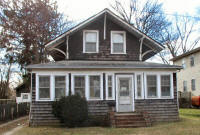
S.S.R.R. Depot moved to 29 Railroad Avenue, Amityville
in 1889
View SE 1/28/2020 Photos/Archive: Dave Morrison |
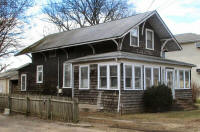
View SW |
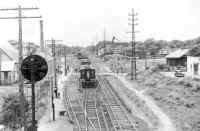
Amityville DD-1 freight view W at Birch
Ave. c.1930-1940 |
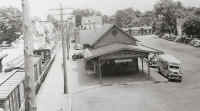
Amityville DD-1 freight view E
c.1930-1940 |
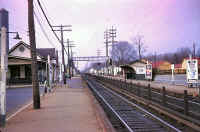
Amityville Station and shelter 1964 View
W |

Amityville Trolley Bridge View W
close-up 1964 |
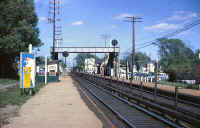
Amityville Trolley Bridge View E 1964 |
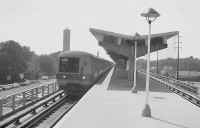
Amityville M-1 first day of new service
08/06/1973 |
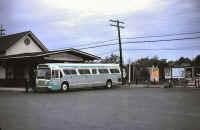
Inaugural run of the Road n’ Rail bus
service to Montauk on 6/8/63. Amityville was the origin for the South Shore
run.
|
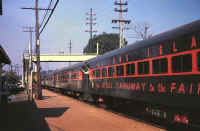
ZIP cars photo was taken within
days of the first runs of this new equipment
in August 1963 (Note the
World’s Fair logo on the sides) |
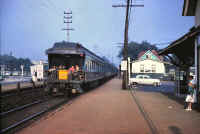
The Cannonball regularly ran on the
Montauk division so I got to enjoy its passing every Friday in summer.
Double-headed, sometimes triple-headed, Alco RS-3’s, 1963
|

Amityville station postcard with the Huntington Railroad trolley on
bridge view NW c.>1909 |
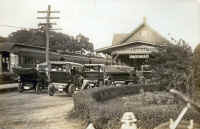
Amityville station postcard
view NE 1919
|
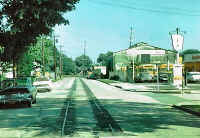
Amityville - Huntington Railroad trolley remains
(c.1919) at Sterling Place/John St. View E 08/1967 |

Amityville Freight Yard - Greene Ave. west of station, view NE 1968 |
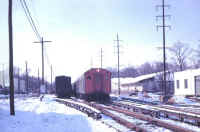
Amityville MU passing team track
view W 1/1968
Note: The 3rd rail is still there. |

Amityville team track - View E
1/1968
|

Amityville team track - View W
1/1968 |
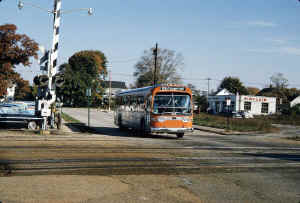
LIRR Road 'n Rail bus #372 bound for Southampton is crossing John Street in Amityville, NY and is heading toward the station in October, 1964. The view is north. (Dave Keller archive)
|
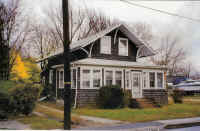
South Side Railroad
1889 moved to private property
Railroad Ave. Photo taken 2009 |
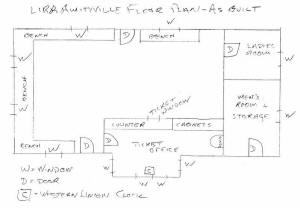
Amityville Station floor plan Drawing: Brad Phillips |

Birch Ave., Amityville view W - 11/23/1968
New temporary tracks in service as the old tracks to the left are just about
gone.
The old and new sets of tracks converge at County Line Road.
|

Modeling Amityville -
The CANNON BALL Fall
2024
Sunrise Trail Division, Northeast Region NMRA
By: Steven Lynch
|
| Special
thanks to Brad Phillips for photos and information. |
| THE
FREIGHT TRAIN DOESN'T STOP HERE ANYMORE by Walter A. Saxton - Semaphore June
1993 Except for an occasional
movement to the East end, freight is a rarity in Amityville these days. This
writer can recall when there was a lively freight traffic on the Long Island
Railroad and when Amityville was an important stop, not only for passengers,
but also for goods. Just before electrification to Babylon in 1925, there
was a daily freight serving way stops from Rockville Centre to Babylon.
In those days there were a number of sidetracks adjacent to the passenger
depot, a freight station for less than carload shipments at John Street and
a loading platform for baggage and local business near Birch Avenue for City
bound shipments.
On the east bound main track there wee at least three sidings. The longest
extended from the westerly end of the passenger platform to a point west of
County Line Road. This track was used for boxcars containing autos,
motorboats and other heavy goods. Tank cars were spotted on this switch to
supply the Sunony Oil Plant. From this long siding another track led to the
General Ice Company's plant and was used to deliver coal. Still another
turnout led to the distribution plant of the Welz and Zerwick Brewing
Company. A siding led to Wilbur Heinley's Coal Yard just west of Broadway.
Later another siding was provided to serve Amityville Creamery. Carloads of
fresh milk were delivered each day for many years.
The daily freight usually chugged into Amityville in mid-morning and the
crew lost no time in going about the business of setting out loaded cars and
picking up empties. Since Amityville was the largest village between
Freeport and Babylon, it was a major distribution point for coal and lumber.
Many carloads of coal, lumber and related products were delivered to the
Wood Lumber Company's yard bounded by John Street, Sterling Place and
Broadway. A long siding led to the lumber sheds and pocket at the time. The
railroad earned considerable revenue from coal, which was the heating fuel
in use at the time. All year long, and especially in summer and fall, the
locomotives spotted hopper and gondola cars loaded with coal for storage in
silos or pockets for delivery to consumers by truck. The Sunrise Coal
Company on Mill Street was another anthracite dealer in the village with a
sidetrack to its yard.
Train watchers were provided with plenty of action when a freight puffed in
from the west. As soon as it arrived, it was divided, if necessary, to
permit traffic to cross John Street or Broadway. Cars were then shunted to
sidings by a shove from the steam locomotive, a brakeman riding the car and
stopping at the proper location by applying the hand brake. Sometimes the
conductor would rearrange his cars in preparation for switching operations
beyond.
The conductor had to be alert for scheduled passenger trains, and utmost
care was taken not to interfere with such traffic, especially the east and
west mid-morning express trains to and from Amagansett.
When the line was electrified to Babylon, the sidings were equipped with the
third rail and DD1 motors were assigned to the freights. Sometimes the
engines would stall where there were gaps in the third rail at turnouts.
Jumper cables provide a connection between the energized rail and the engine
contact shoe.
The last siding was torn out in 1969. The sights and sounds at the depot
have changed. The melodious whistle of the steam passenger locomotive is
long gone along with the shrill blast of the freight engine. Gone too, is
the honk of the diesel and the whine of the traction motors of the Long
Island MP54 multiple unit electric passenger cars. |




















































